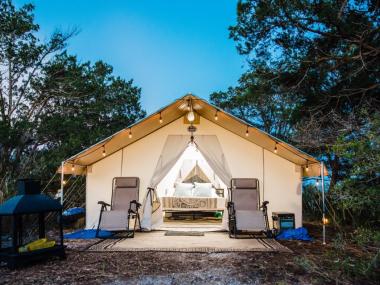Georgia's Musical Legacy in 10 Objects
From a soul singer's cape to a fiddler's rock, these are must-sees for any Georgia music fan.
Multi-talented musicians and performers have left their marks all over Georgia. Learn more about their legacies through these iconic objects.

James Brown's cape on display at the Augusta Museum of History
James Brown's cape
The universally acclaimed Godfather of Soul and a consummate showman, Brown would regularly don a cape and crown at a key point of his legendary non-stop live shows. One of the original articles is on display in the permanent exhibit devoted to Brown in his hometown at the Augusta Museum of History.

Allman Brothers Band's equipment case on display at The Big House
The Allman Brothers Band's equipment case
Some of these road warriors’ best loved recordings were captured live, setting the foundation for both Southern rock and the jam band scene, and establishing Macon as the hub for the trailblazing Capricorn Records. This crate — featured on the cover of the group's seminal 1971 live album, At Fillmore East — is on permanent display at The Allman Brothers Band Museum at The Big House in Macon.
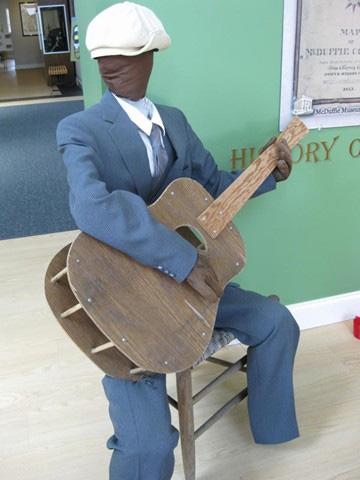
Blind Willie McTell at the McDuffie Museum
Blind Willie McTell's gravesite
The Allmans brought this bluesman renewed notoriety with an anthemic cover of his “Statesboro Blues,” but aficionados needed no such reminder; as Bob Dylan said, “NOBODY sings the blues like Blind Willie McTell.” There’s some added intrigue here: McTell, who died in 1959, is buried at Jones Grove Cemetery in Happy Valley, Georgia. The original tombstone read Edd McTier — the family sometimes spelled its surname McTier; “Edd” was simply an error stemming from Willie’s cousin Eddie having placed the order. The original marker is now on display at the McDuffie Museum; 20 years ago, novelist (and McTell fan) David Fulmer paid for a corrected replacement.
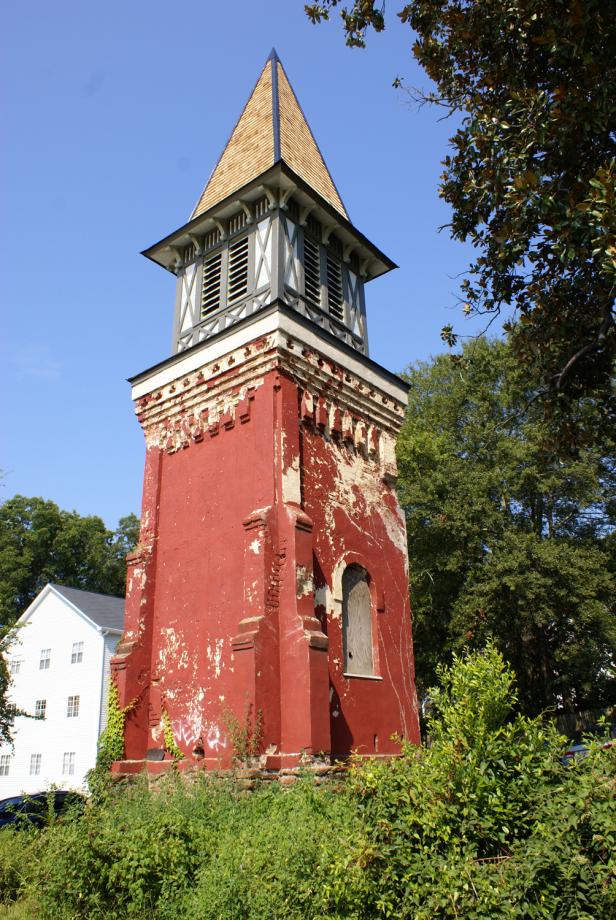
The Steeple at Nuci's Space in Athens before restoration
The Steeple, site of R.E.M.'s first show
Dating to 1871, St. Mary’s Church was one of Athens’ first 10 houses of worship. By 1980, it was a large, run-down apartment, two of whose tenants happened to be Peter Buck and Michael Stipe. Playing as Twisted Kites for a friend’s birthday party in what had once been the church sanctuary, that April show marked the first public performance by the quartet that soon renamed itself R.E.M. The building has since been leveled, but the uniquely designed steeple has been renovated and is now owned by Nuci’s Space, a musicians’ resource foundation located next door and well worth checking out. Book a guided tour that includes the steeple as well as other Athens music landmarks from Historic Athens Tours.
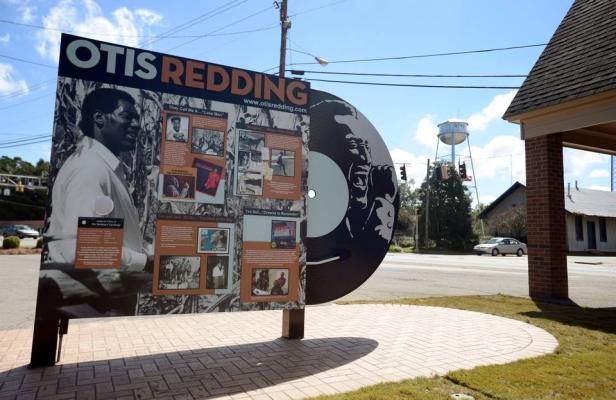
Otis Redding Memorial in Gray, Georgia
Otis Redding memorial
There's no dock of the bay on which to sit, but this seven-foot road marker in the shape of a record jacket is more than worthy of a photo opp. The soul great was born in Dawson, Georgia, and grew up in Macon, but upon hitting it big, Redding bought a farm in nearby Gray, where he spent his adult years with his family. Pay some respect when you’re in the area.
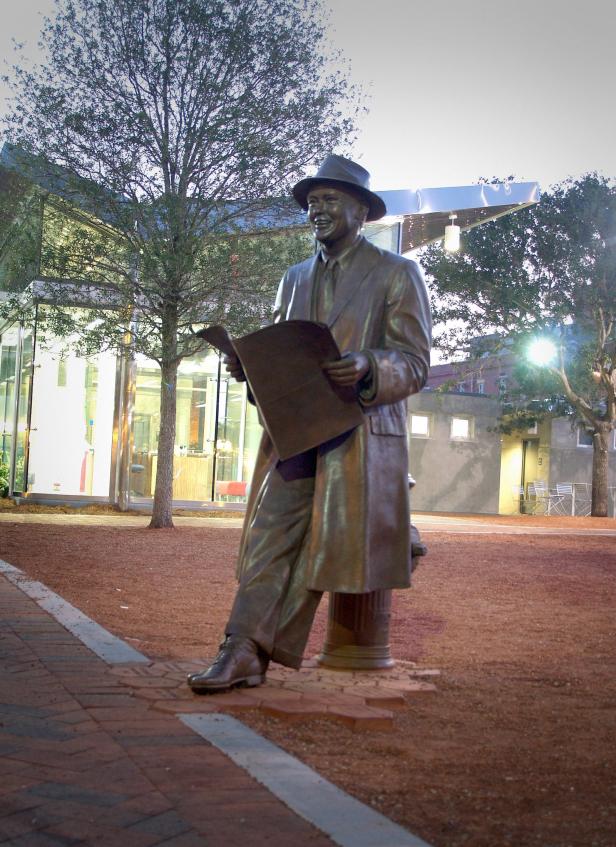
Johnny Mercer's statue in Savannah
Johnny Mercer's statue
The composer of roughly 1,500 tunes and winner of four Best Original Song Oscars, the depth of Johnny Mercer’s contribution to the book of American standards from the 1930s-50s is hard to fathom (“Moon River,” “Hooray for Hollywood,” “That Old Black Magic,” just for starters). Savannah’s favorite son received his own statue in 2009, a life-size image of the nattily dressed Mercer leaning against a fire hydrant reading a newspaper in Ellis Square.
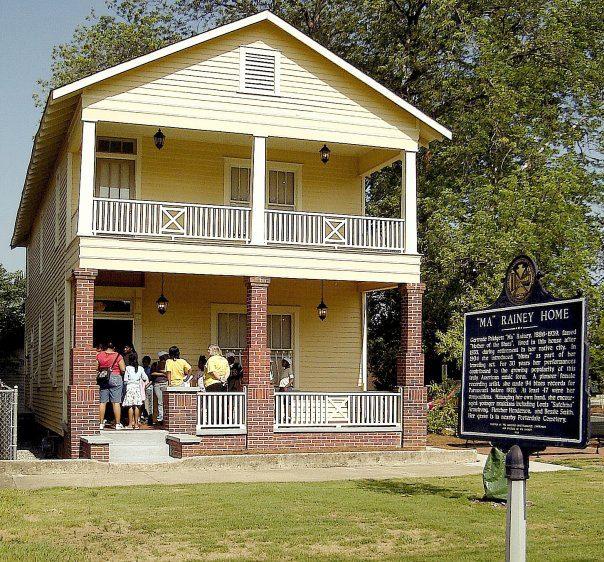
Ma Rainey House & Blues Museum in Columbus, Georgia
Ma Rainey's piano
“Mother of the Blues" Ma Rainey was born in Columbus, and became one of the first recorded blues artists and a leading performer of the 1920s. She earned enough money to buy two Columbus theaters that she managed after her retirement until her passing in 1939. On stage, she was a belter who left the piano playing to others (usually Thomas Dorsey), but back home she liked to accompany herself. See her original piano on display at the Ma Rainey House and Blues Museum.
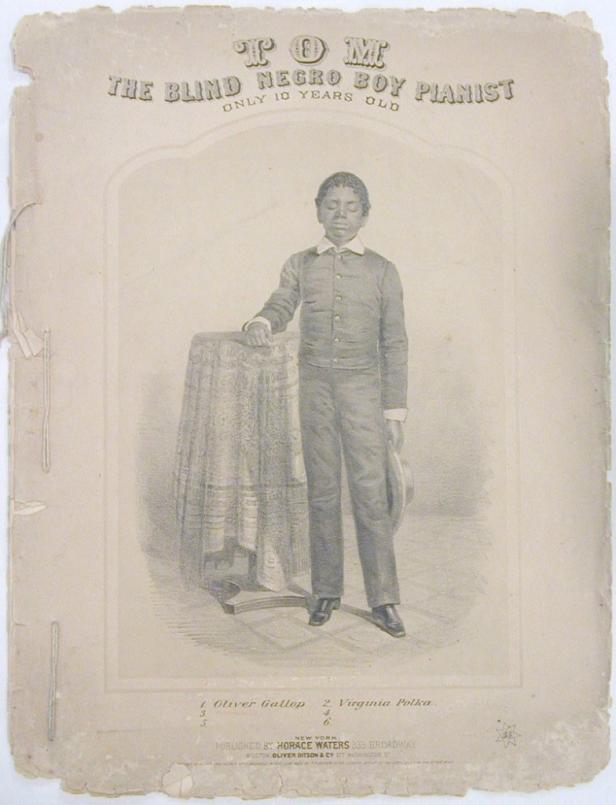
Blind Tom Wiggins Blues. Courtesy Columbus Museum
Blind Tom Wiggins' blues
Just down the road from the Ma Rainey House, the Columbus Museum offers an artifact from the uncomfortable side of blues history. The autistic prodigy Blind Tom Wiggins composed his first song at age four and performed in the White House for President James Buchanan in 1860 — while still a slave. On museum display is the sheet music for "Oliver Gallop," which Wiggins penned when he was only 10 years old. Even after emancipation, he never saw a penny of his earnings.

The SWAG Shop in Atlanta
Killer Mike's barber shop
Atlanta native "Killer Mike" Render is riding high as half of the acclaimed hip hop duo Run the Jewels, but his community roots and social activism can be traced back to his debut on OutKast’s “Stankonia” and role in Atlanta’s famed Dungeon Family. In 2011, he opened The SWAG (Shave Wash and Groom) Shop as a combination barber shop and community gathering hub. It’s a shining example of the spirit of community and local empowerment that marks the best of ATL’s hip hop culture.
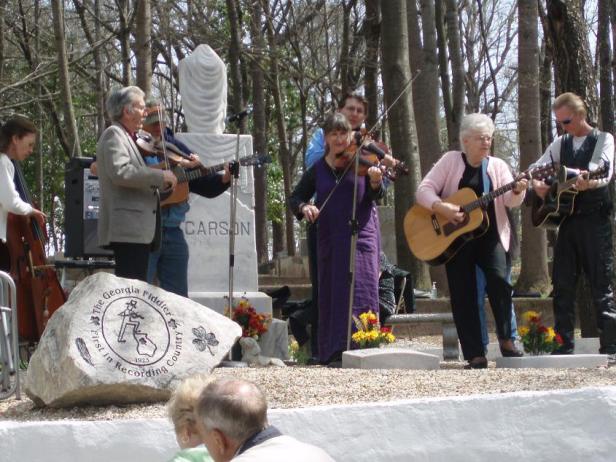
Fiddlin' John Carson's rock in East Atlanta
Fiddlin' John Carson's rock
Fiddlin’ John Carson was born in Fannin County, near the towns of Dahlonega and Blue Ridge that remain Georgia’s epicenter for Appalachian and old-time music. But it was after he moved to the Cabbagetown neighborhood of Atlanta to work in the cotton mill that a traveling rep of Okeh Records in 1923 made him one of the first recorded fiddlers. Carson is buried at Sylvester Cemetery in East Atlanta, where musicians still gather for an informal jam on his birthday at the rock that marks his gravesite.


